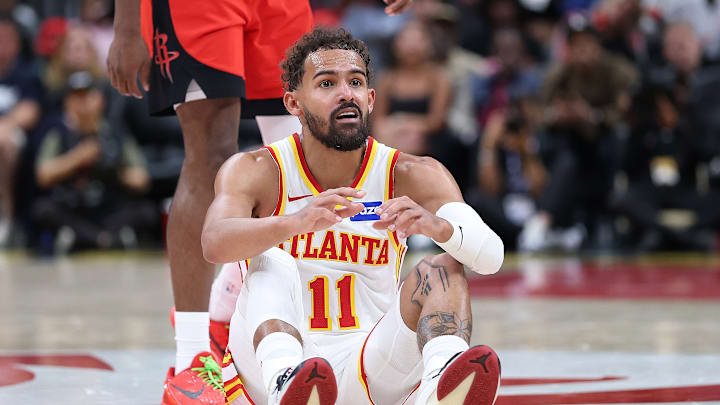At the most basic level, the Atlanta Hawks are simply a different team when Trae Young plays.
Since Young went down with a right knee injury in Atlanta’s fifth game against the Brooklyn Nets, the Hawks have been in the national spotlight. With Young having an expiring contract and Atlanta jumping to an 8-2 record without Young (now 8-4), it was easy for the provocateurs of NBA media to stir trade rumors.
Of course, this win streak has been influenced by an incredibly weak stretch of the season. The Hawks were as high as third in the East during this run, but at the time, they had played just two top-ten teams since losing Young.
While there is room to debate whether the team would be better in the long term without Young, one fact is unavoidable: the Hawks are not the same team with Young on the floor.
Hawks fans are used to what the Trae-led squad looks like. Young dominates possession in a truly masterful way, carving up defenses to create open looks for himself and his teammates. While his scoring pops off the page more than his playmaking, he is arguably a more talented creator who has been burdened with a scoring role that is too significant for his own good.
While his efficiency has lagged behind league average, you would expect this to improve with improved supporting talent. On the defensive end, Young is a clear weakness, but at a level similar to other star point guards when he gives his full effort.
Is the Trae-led or Trae-less identity more appealing?
Perhaps the novelty of the Trae-less squad was the reason Hawks fans were so intrigued by the recent win streak. We’ve never seen a Jalen Johnson-led team, and we have never seen the team have enough juice on offense to win without Young. Fans were then introduced to both in an 8-2 run with a five-game streak to punctuate.
So, what does the new team look like? The Johnson-led Hawks live in the fast break, and they play physical defense. But they struggle in halfcourt offense, and the rebounding problem persists regardless of Young’s presence. The new team is arguably more fun but has less of a clear, sustainable direction, at least with this personnel grouping.
If Young could bring his stabilizing presence as a point guard to this team, however, without changing the overall dynamic, the Hawks could find the best of both worlds. Young could share the ball in the early offense to allow Atlanta to sustain its transition presence, while trailing the play and running the halfcourt offense after a stalled transition possession.
If Young and the team can find a way to showcase both Young’s signature halfcourt game and the youth and energy of the supporting cast, the Hawks could be the next Eastern Conference team to make the leap to championship contention.
